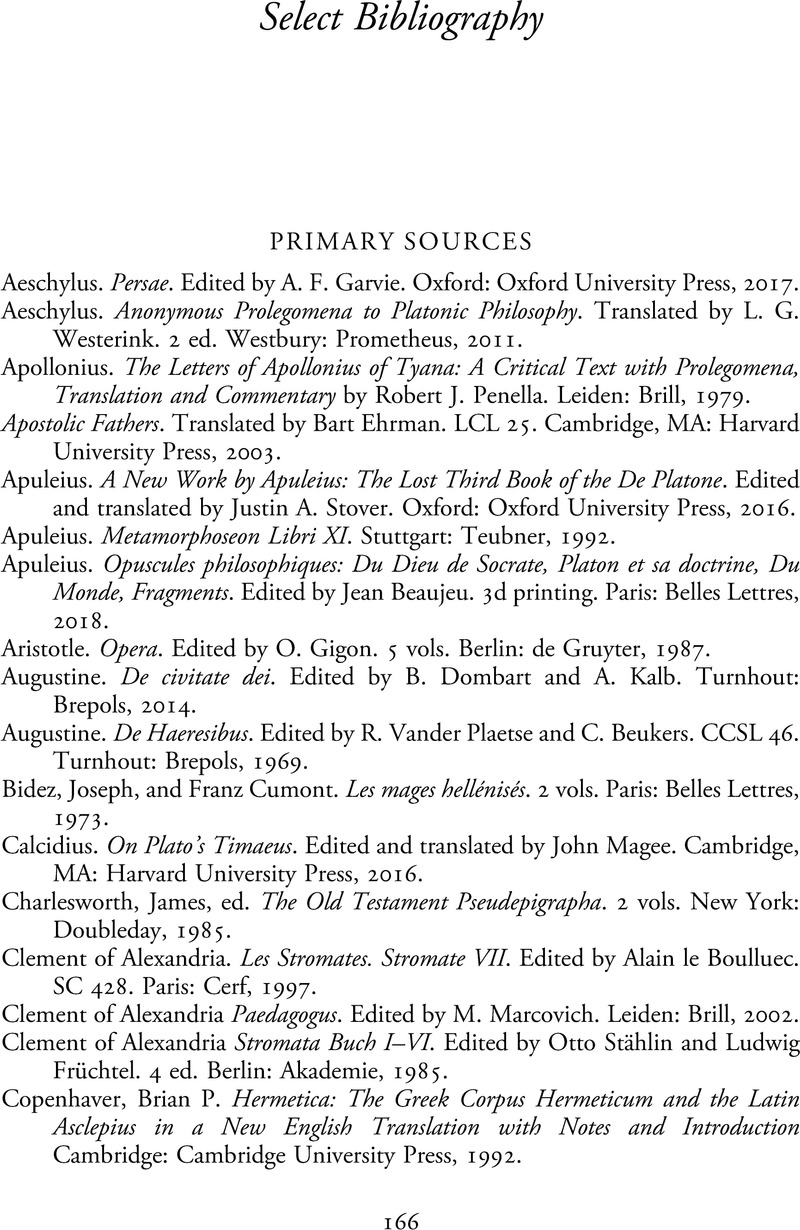Book contents
- Posthuman Transformation in Ancient Mediterranean Thought
- Posthuman Transformation in Ancient Mediterranean Thought
- Copyright page
- Epigraph
- Dedication
- Contents
- Acknowledgments
- Abbreviations
- Introduction
- Chapter 1 Hesiod and Daimonification in the Archaic and Classical Periods
- Chapter 2 Empedocles as Daimon
- Chapter 3 Plato and the Moralization of Daimonification
- Chapter 4 Daimonification in Xenocrates, Plutarch, Apuleius, and Maximus of Tyre
- Chapter 5 Moses Angelified in Philo of Alexandria
- Chapter 6 Origen, Angelification, and the Angelified Jesus
- Chapter 7 Plotinus as a Living Daimon
- Chapter 8 The Angelification of Zostrianos
- Conclusion
- Select Bibliography
- Index
- References
Select Bibliography
Published online by Cambridge University Press: 24 December 2020
- Posthuman Transformation in Ancient Mediterranean Thought
- Posthuman Transformation in Ancient Mediterranean Thought
- Copyright page
- Epigraph
- Dedication
- Contents
- Acknowledgments
- Abbreviations
- Introduction
- Chapter 1 Hesiod and Daimonification in the Archaic and Classical Periods
- Chapter 2 Empedocles as Daimon
- Chapter 3 Plato and the Moralization of Daimonification
- Chapter 4 Daimonification in Xenocrates, Plutarch, Apuleius, and Maximus of Tyre
- Chapter 5 Moses Angelified in Philo of Alexandria
- Chapter 6 Origen, Angelification, and the Angelified Jesus
- Chapter 7 Plotinus as a Living Daimon
- Chapter 8 The Angelification of Zostrianos
- Conclusion
- Select Bibliography
- Index
- References
Summary

- Type
- Chapter
- Information
- Posthuman Transformation in Ancient Mediterranean ThoughtBecoming Angels and Demons, pp. 166 - 192Publisher: Cambridge University PressPrint publication year: 2021

